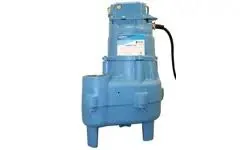Pashto
- Afrikaans
- Albanian
- Amharic
- Arabic
- Armenian
- Azerbaijani
- Basque
- Belarusian
- Bengali
- Bosnian
- Bulgarian
- Catalan
- Cebuano
- Corsican
- Croatian
- Czech
- Danish
- Dutch
- English
- Esperanto
- Estonian
- Finnish
- French
- Frisian
- Galician
- Georgian
- German
- Greek
- Gujarati
- Haitian Creole
- hausa
- hawaiian
- Hebrew
- Hindi
- Miao
- Hungarian
- Icelandic
- igbo
- Indonesian
- irish
- Italian
- Japanese
- Javanese
- Kannada
- kazakh
- Khmer
- Rwandese
- Korean
- Kurdish
- Kyrgyz
- Lao
- Latin
- Latvian
- Lithuanian
- Luxembourgish
- Macedonian
- Malgashi
- Malay
- Malayalam
- Maltese
- Maori
- Marathi
- Mongolian
- Myanmar
- Nepali
- Norwegian
- Norwegian
- Occitan
- Pashto
- Persian
- Polish
- Portuguese
- Punjabi
- Romanian
- Russian
- Samoan
- Scottish Gaelic
- Serbian
- Sesotho
- Shona
- Sindhi
- Sinhala
- Slovak
- Slovenian
- Somali
- Spanish
- Sundanese
- Swahili
- Swedish
- Tagalog
- Tajik
- Tamil
- Tatar
- Telugu
- Thai
- Turkish
- Turkmen
- Ukrainian
- Urdu
- Uighur
- Uzbek
- Vietnamese
- Welsh
- Bantu
- Yiddish
- Yoruba
- Zulu
Telephone: +86 13120555503
Email: frank@cypump.com
Dec . 31, 2024 05:48 Back to list
pump for slurry
Understanding Pumps for Slurry Essential Insights
In various industries, the management of slurry is a vital component of operations, especially in mining, construction, and wastewater management. A slurry, being a mixture of solids and liquids, poses unique challenges when it comes to transportation and processing. To tackle these challenges, the choice and use of pumps designed specifically for slurry applications become crucial. This article delves into the importance, types, and considerations surrounding slurry pumps.
Importance of Slurry Pumps
Slurry pumps are engineered to handle mixtures that can be abrasive, corrosive, and dense, which regular pumps may not effectively manage. The need for specialized pumps arises from the properties of slurry, which can include varying viscosity, particle size, and composition. These factors directly impact the efficiency and effectiveness of the pumping system. A poorly chosen pump can lead to frequent breakdowns, increased maintenance costs, and operational inefficiencies.
In industries such as mining, slurry pumps facilitate the transportation of tailings, concentrates, or dredged materials. In wastewater treatment, they play a crucial role in moving sludge and other contaminants. Overall, slurry pumps enhance productivity and ensure safe and effective handling of materials.
Types of Slurry Pumps
There are several types of slurry pumps available in the market, each designed to cater to specific slurry characteristics and operational requirements.
1. Horizontal Slurry Pumps These are the most common type of slurry pumps, ideal for applications requiring a steady and predictable flow. They can handle larger volumes and are typically used in mining and mineral processing.
2. Vertical Slurry Pumps Best suited for applications where space is limited, vertical pumps are designed to sit within the slurry. They are often used in sumps and pits, offering a compact solution for conveying slurry.
3. Submersible Slurry Pumps These pumps are designed to operate submerged in the slurry, making them suitable for severe conditions, such as high solid concentrations. They are commonly used in dewatering applications.
4. Pneumatic Slurry Pumps Utilizing air to transport the slurry, these pumps are effective for specific applications where traditional pumps may struggle. They are often used in environments with high viscosity and abrasive materials.
pump for slurry

5. Peristaltic Pumps These pumps have a unique mechanism that allows them to handle delicate or shear-sensitive slurries without damaging them. They are commonly used in the food industry and for sensitive chemical applications.
Considerations for Choosing a Slurry Pump
Selecting the right slurry pump involves several considerations to ensure optimal performance and longevity
1. Solid Size and Concentration Understanding the size and concentration of solids within the slurry is essential. Pumps are rated for specific particle sizes and concentrations, which can influence their ability to operate efficiently.
2. Slurry Composition The chemical makeup of the slurry can affect the pump’s material choice. Corrosive and abrasive slurries may require pumps constructed from specialized materials such as high-chrome alloys or rubber linings.
3. Viscosity and Temperature The viscosity of the slurry can determine the pump type and design. Higher viscosity slurries require more robust pumps capable of exerting greater pressure. Additionally, operating temperature can affect the choice of materials.
4. Flow Rate and Head Requirements The desired flow rate and the height to which the slurry must be pumped (head) directly influence pump selection. Performance curves available from manufacturers can help determine the appropriate model.
5. Maintenance and Operating Costs Long-term operating costs include energy consumption and maintenance needs. Opting for a pump that is easy to service can reduce downtime and overall costs.
Conclusion
In conclusion, the effective handling and transportation of slurry are essential for the smooth functioning of many industrial processes. By understanding the various types of slurry pumps available and the critical considerations for their selection, businesses can enhance their operations and reduce risks associated with mismanagement of slurry. Investing in the right slurry pump translates to improved efficiency, reduced maintenance costs, and ultimately, a better bottom line. As industries continue to evolve, so too will the technology and design of slurry pumps, ensuring they meet the ever-changing demands of the market.
-
High-Efficiency Submersible Effluent Pump for Sewage & Wastewater Solutions
NewsJul.08,2025
-
High Quality CH Warman Slurry Pump Factory - Leading Horizontal Slurry Pump Supplier
NewsJul.08,2025
-
Hot Sale Chemical Circulating Pump – Efficient & Durable Slurry Circulating Pump Solutions
NewsJul.08,2025
-
High-Efficiency Submersible Dredge Pump for Sand & Gravel Durable Dredge Slurry Pumps Solutions
NewsJul.07,2025
-
Wholesale Slurry Pump Impeller Supplier – High-Quality & Efficient Pump Parts for Enhanced Performance
NewsJul.07,2025
-
High-Efficiency Water Submersible Pumps Reliable Water Pump for Potable Water Supply
NewsJul.06,2025










